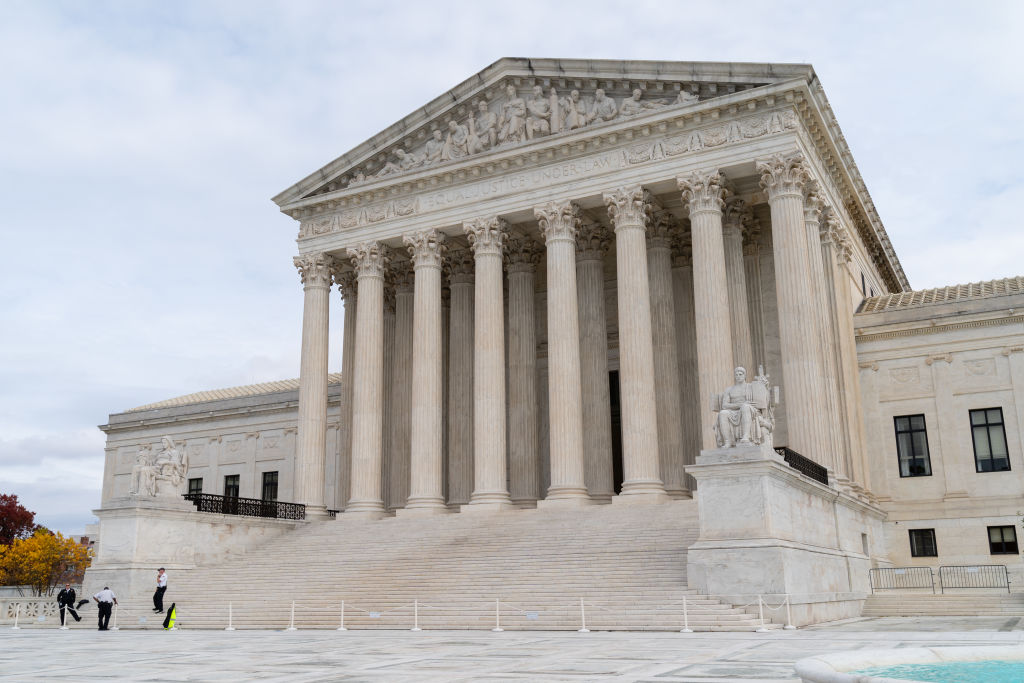Affirmative Action Ends: Supreme Court Decides Race Admisssions
Supreme Court Strikes Down Affirmative Action So Colleges Can’t Consider Race In Admissions

Source: The Washington Post / Getty
The U.S. Supreme Court on Thursday decided to reverse four decades of precedent and prevent colleges and universities from ever considering race or ethnicity in admissions in any way and for any reason.
The affirmative action case centered on Harvard University and the University of North Carolina (UNC), but Thursday’s ruling is expected to set a national precedent for all institutions of higher learning to follow suit.
https://twitter.com/SIfill_/status/1674419218799005697?s=20
The conservative-leaning Supreme Court voted 6-3 along the justices’ ideological lines to reach its decision in Students for Fair Admissions v. Harvard and UNC.
Although the case against Harvard was filed ostensibly on behalf of Asian American students, and there is much made in that case about the fact that Asian Americans suffer discrimination in admissions at elite schools like Harvard, at the end of the day, the case is simply an attack on the practice of considering race in college admissions.
The Supreme Court ruled that Harvard’s and UNC’s admissions practices violate the equal protection clause of the 14th Amendment.
It is the court’s opinion that colleges and universities “may never use race as a stereotype or negative, and — at some point — they must end.”
The opinion also included the following: “nothing in this opinion should be construed as prohibiting universities from considering an applicant’s discussion of how race affected his or her life, be it through discrimination, inspiration, or otherwise. But, despite the dissent’s assertion to the contrary, universities may not simply establish through application essays or other means the regime we hold unlawful today.”
Chief Justice John Roberts led the opinion, writing in part that “however well intentioned and implemented in good faith,” the admission policies “fail each of these criteria.”
Associate Justice Sonia led the dissent in the Harvard case that was joined by Associate Justices Elena Kagan Ketanji Brown Jackson, the latter of whom led the dissent in the UNC case.
The court’s decision “rolls back decades of precedent and momentous progress,” Sotomayor said in her dissent. “It holds that race can no longer be used in a limited way in college admissions to achieve such critical benefits.”
Sotomayor also added: “In so holding, the Court cements a superficial rule of colorblindness as a constitutional principle in an endemically segregated society.”
Associate Justice Brett Kavanaugh concurred with the court’s opinion.
“In light of the Constitution’s text, history, and precedent, the Court’s decision today appropriately respects and abides by Grutter’s explicit temporal limit on the use of race-based affirmative action in higher education,” Kavanaugh said.
Both the Harvard and UNC cases were filed by the same conservative activist (Edward Blum) who has been trying to get the Supreme Court to invalidate the use of race and ethnicity in college and university admissions since 2008 when he filed Fisher v. Texas, a case that also went all the way up to the Supreme Court. He lost that case in 2016 when the Supreme Court upheld the University of Texas’s use of race in admissions. Blum has been banking on the fact that, with the appointment of three new conservative justices, he now has the votes to get the result he always wanted but had never been able to achieve.
Valuing and promoting diversity has become such an integral part of how many colleges and universities pursue their educational missions that it will likely require a fundamental change in how those colleges and universities operate.
Black leaders were quick to condemn the ruling.
“The Supreme Court just stuck a dagger in the back of Black America,” Rev. Al Sharpton said in a statement emailed to NewsOne. “Affirmative action was a commonly embraced policy because it served as a check on an admission process that was rife with racism, nepotism, and favoritism for generations. The reality is race plays a factor in admissions, from pre-K to post-doctorate, and institutions just saw their best tool for fairness outlawed.”
NAACP President and CEO Derrick Johnson said the decision doesn’t reflect the support across America for affirmative action to stay in place and will disproportionately affect Black students’ access to higher education.
“Let me be clear – affirmative action exists because we cannot rely on colleges, universities, and employers to enact admissions and hiring practices that embrace diversity, equity and inclusion,” Jackson said in a statement. “Race plays an undeniable role in shaping the identities of and quality of life for Black Americans. In a society still scarred by the wounds of racial disparities, the Supreme Court has displayed a willful ignorance of our reality.”
The Congressional Black Caucus said the decision is a reflection of the Supreme Court and not the U.S.
“By delivering a decision on affirmative action so radical as to deny young people seeking an education equal opportunity in our education system, the Supreme Court has thrown into question its own legitimacy,” the group said in a statement.
This is a developing story that will be updated as additional information becomes available.
SEE ALSO:
A Brief History Of Affirmative Action In America
Majority Of Americans Believe College Should Consider Race In Admissions, Poll Finds


















